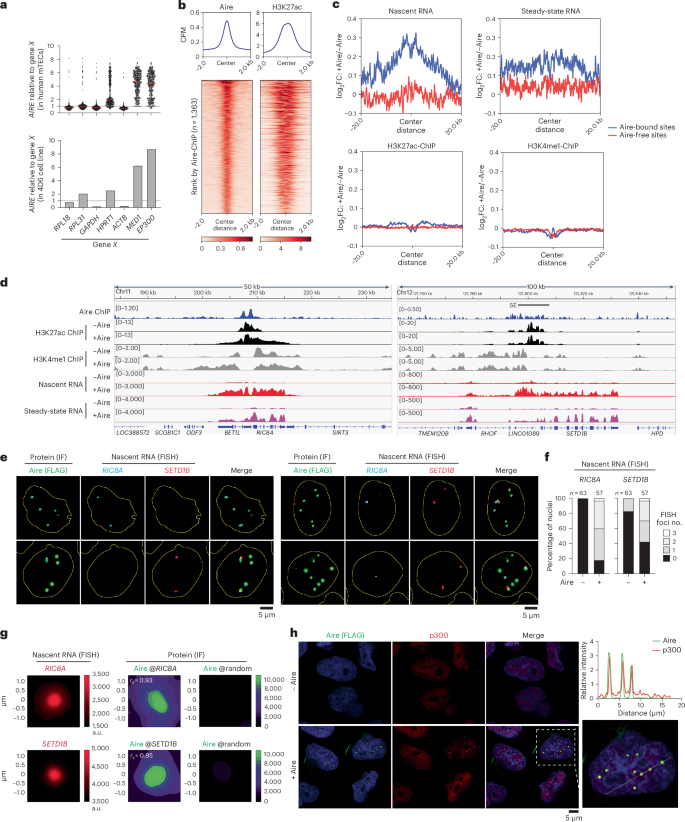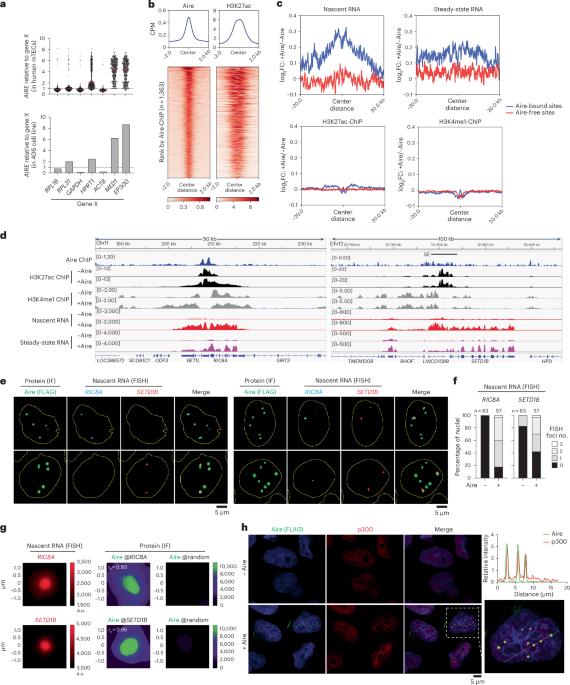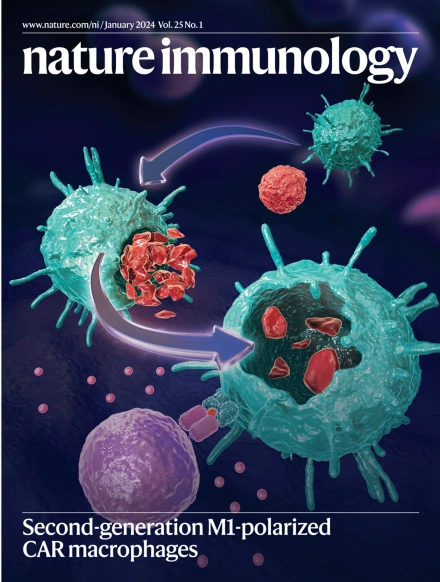艾尔转录凝聚体的受控组装机制
IF 27.7
1区 医学
Q1 IMMUNOLOGY
引用次数: 0
摘要
转录凝聚体在基因表达和调控中发挥着至关重要的作用,但人们对其组装机制仍然知之甚少。在这里,我们报告了自身免疫调节因子(Aire)凝聚体的多层组装机制,Aire 是一种重要的转录调节因子,可协调基因表达重编程以实现中枢 T 细胞耐受。Aire 凝集体聚集在增强子上,刺激局部转录活动并连接不同的染色体间位点。这种功能性凝聚体的形成有赖于三个 Aire 结构域之间的协调:聚合结构域树突酶激活招募结构域(CARD)、组蛋白结合结构域(第一个植物同源结构域(PHD1))和 C 端尾部(CTT)。具体来说,CTT 与辅激活子 CBP/p300 结合,将 Aire 募集到富含 CBP/p300 的增强子上,并促进 CARD 介导的凝聚体组装。相反,PHD1 与无处不在的组蛋白标记 H3K4me0 结合,使 Aire 分散在整个基因组中,直到 Aire 核聚在增强子上。我们的研究结果表明,PHD1 介导的抑制和 CTT 介导的刺激 Aire 聚合之间的平衡对于在目标位点形成具有转录活性的凝聚体至关重要,这为转录调节因子的受控聚合提供了新的见解。本文章由计算机程序翻译,如有差异,请以英文原文为准。


Mechanism for controlled assembly of transcriptional condensates by Aire
Transcriptional condensates play a crucial role in gene expression and regulation, yet their assembly mechanisms remain poorly understood. Here, we report a multi-layered mechanism for condensate assembly by autoimmune regulator (Aire), an essential transcriptional regulator that orchestrates gene expression reprogramming for central T cell tolerance. Aire condensates assemble on enhancers, stimulating local transcriptional activities and connecting disparate inter-chromosomal loci. This functional condensate formation hinges upon the coordination between three Aire domains: polymerization domain caspase activation recruitment domain (CARD), histone-binding domain (first plant homeodomain (PHD1)), and C-terminal tail (CTT). Specifically, CTT binds coactivators CBP/p300, recruiting Aire to CBP/p300-rich enhancers and promoting CARD-mediated condensate assembly. Conversely, PHD1 binds to the ubiquitous histone mark H3K4me0, keeping Aire dispersed throughout the genome until Aire nucleates on enhancers. Our findings showed that the balance between PHD1-mediated suppression and CTT-mediated stimulation of Aire polymerization is crucial to form transcriptionally active condensates at target sites, providing new insights into controlled polymerization of transcriptional regulators. Sun Hur and colleagues examine the mechanism of Aire protein function underlying peripheral tissue antigen gene expression in thymic mTECs. They show that Aire condensates assemble on enhancers that are subject to intricate regulatory mechanisms, ensuring tight coordination of Aire CARD polymerization with genomic target recognition.
求助全文
通过发布文献求助,成功后即可免费获取论文全文。
去求助
来源期刊

Nature Immunology
医学-免疫学
CiteScore
40.00
自引率
2.30%
发文量
248
审稿时长
4-8 weeks
期刊介绍:
Nature Immunology is a monthly journal that publishes the highest quality research in all areas of immunology. The editorial decisions are made by a team of full-time professional editors. The journal prioritizes work that provides translational and/or fundamental insight into the workings of the immune system. It covers a wide range of topics including innate immunity and inflammation, development, immune receptors, signaling and apoptosis, antigen presentation, gene regulation and recombination, cellular and systemic immunity, vaccines, immune tolerance, autoimmunity, tumor immunology, and microbial immunopathology. In addition to publishing significant original research, Nature Immunology also includes comments, News and Views, research highlights, matters arising from readers, and reviews of the literature. The journal serves as a major conduit of top-quality information for the immunology community.
 求助内容:
求助内容: 应助结果提醒方式:
应助结果提醒方式:


